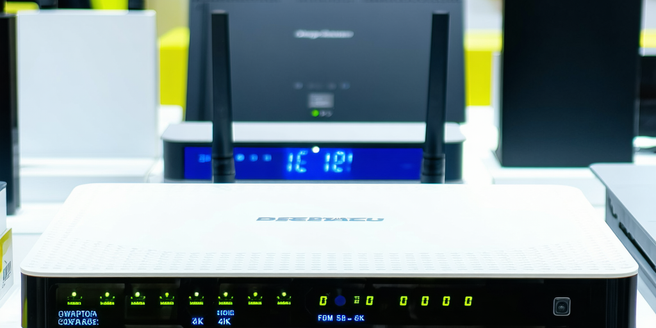
Chipset Advancements In Mobile Tech
Modern mobile chipsets are integral to smartphone innovation, evolving from basic processors to advanced systems-on-chip (SoCs). Leading companies like Qualcomm, Apple, and MediaTek are pushing the boundaries of performance and energy efficiency. The transition to smaller process technologies, such as 5nm, has enhanced energy efficiency and processing power, supporting dynamic applications such as AR and gaming. Key players dominate the market by integrating AI, which optimizes performance and enables sophisticated tasks. Energy-efficient designs are minimizing environmental impact while advancing sustainable technology. Future developments, including 5G integration and neuromorphic chips, promise to revolutionize mobile experiences and enable new innovations in fields like VR and telemedicine.

Signal Boosting Technologies
Signal boosting is essential for enhancing wireless communication by amplifying weak signals and extending coverage for cellular and internet connections. This technology is crucial for maintaining connectivity in areas with poor reception by using devices such as signal boosters, repeaters, and amplifiers. In the modern interconnected world, signal boosting is vital for seamless communication, especially in remote or rural areas where infrastructure is lacking. Individuals, businesses, and emergency services rely on this technology for stable communication. Different signal boosting technologies, such as passive and active DAS, consumer-grade boosters, and femtocells, cater to diverse needs. Signal boosters work by utilizing external antennas to capture weak signals, amplifiers to enhance them, and internal antennas to rebroadcast them, thereby improving call quality and data speed while conserving device battery life. When choosing a signal booster, factors like coverage area, frequency bands, signal quality, antenna system, installation ease, and budget must be considered to ensure optimal performance. As 5G networks roll out, signal boosting technologies are set to evolve further, offering improved capabilities.

How To Implement Async Communication Tools
Async communication, which involves exchanging information without real-time interaction, is ideal for teams with varied schedules or remote members across time zones. This method enhances productivity by reducing immediate response pressure and allows thoughtful contributions, fostering an inclusive and flexible work environment. Key async tools include emails, project management platforms, and collaborative documents. Choosing the right async tools tailored to your team's needs, such as Slack, Trello, and Zoom, is crucial for efficiency. Integration requires clear communication, established guidelines, and phased transition with feedback opportunities to support flexibility. Training is essential to ensure smooth adoption, involving comprehensive sessions, user guides, and peer-to-peer learning. Measuring the impact of async tools involves tracking performance indicators and gathering feedback to ensure continued effectiveness. Regular assessment and adaptation can significantly boost productivity and collaboration.

Remote Work Technologies
Remote work has evolved drastically with the introduction of innovative communication and productivity tools. Originally relying on email, the transition to video conferencing, instant messaging, and project management software has transformed team collaboration. These advancements facilitate task management, document sharing, and seamless meetings, making remote work more efficient and globally integrated. Driven by the need for enhanced connectivity, these tools continue to evolve, showcasing a commitment to overcoming the challenges of remote work and striving for optimal collaboration.

Virtual Reality In Daily Life
Virtual reality technology has made remarkable advancements, transitioning from expensive, limited systems to accessible, immersive experiences with standalone headsets. The evolution of VR has significantly impacted various sectors. In education, VR fosters interactive learning, enabling virtual field trips and hands-on experiments that enhance student engagement. In healthcare, VR offers realistic training simulations and therapeutic applications for pain management and rehabilitation. The workplace benefits from VR through enhanced training and collaboration, allowing employees to practice skills safely and work together in virtual spaces. In the entertainment realm, VR elevates gaming and introduces virtual concerts and interactive storytelling, offering unique audience engagement. As VR technology continues to advance, its potential to transform industries and improve accessibility and experience grows significantly.

Wi-fi Speed Optimization
Optimize your Wi-Fi experience by understanding key aspects such as the differences between 2.4 GHz and 5 GHz bands, which affect range and speed. Select the right router by considering coverage area, simultaneous users, and internet speeds, and stay updated on wireless standards. Position your router centrally, avoiding obstacles for optimal coverage. Minimize interference from electronic devices by choosing appropriate bands and settings, such as picking less congested channels. Fine-tune advanced settings including channels and bands for improved performance, utilizing dual-band capabilities for better load distribution. Achieve enhanced connectivity by strategically managing these elements.

Self-care Technology
Explore how technology is revolutionizing self-care by offering tools like meditation apps, wearable fitness trackers, and virtual therapy platforms. These innovations help improve mental and physical well-being by providing personalized insights and support. While technology offers easy access to health resources, it's crucial to balance its use with traditional self-care practices for a holistic approach to wellness. Meditation apps such as Headspace and Calm guide users towards mindfulness, while smart home gadgets create a relaxing environment. Virtual therapy platforms offer convenient mental health support, breaking down barriers to access. However, moderating screen time to incorporate offline activities remains essential for a fulfilling lifestyle.

Wearable Technology In Health
Wearable health technology is rapidly advancing due to improvements in miniaturization and connectivity. Devices like fitness trackers and smartwatches are enabling continuous health monitoring, allowing consumers to proactively manage their wellness by providing insights into health patterns. The integration of these devices into healthcare is part of a broader movement toward personalized medicine. They are revolutionizing patient monitoring by delivering real-time data, which assists in early detection of health issues and reduces the need for hospital visits. In preventive healthcare, wearables empower individuals to track their health metrics, encouraging healthier lifestyle decisions and facilitating early interventions to prevent chronic conditions. Despite their potential, challenges such as data privacy, interoperability, and accessibility must be addressed. Future innovations will likely include AI integration, new bio-sensing technologies, and flexible electronics, advancing the role of wearables in personalized and efficient healthcare management.

Standby Time On Energy-efficient Tablets
Understanding standby time in modern tablets involves recognizing the duration a device can stay powered on in an inactive state while conserving battery life. Key factors affecting standby time include battery capacity, software efficiency, network connectivity, background apps, and ambient temperature. When comparing different tablets, those with larger batteries and advanced power management systems generally offer better standby efficiency. Software updates can optimize or detract from standby time by altering power consumption dynamics. Maximizing standby time can be achieved by updating software, minimizing background activity, adjusting display settings, and monitoring battery usage. Future tablet designs aim to enhance energy efficiency through advanced processor architectures, optimizing battery performance and extending device readiness.

Tech Industry Diversity
The tech industry's diversity issues are highlighted by the fact that women make up only 25% of its workforce, with Black and Hispanic employees accounting for 9% and 8% respectively in U.S. firms. Despite initiatives to recruit diverse talent, systematic barriers and underrepresentation, especially at leadership levels, persist. Diverse teams enhance innovation and profitability, suggesting that diversity is not only a moral imperative but a strategic advantage. However, barriers like biased hiring, lack of role models, and financial constraints limit entry for underrepresented groups. Successful initiatives involve mentorship, transparency, anti-bias training, and partnerships with educational institutions. Building an inclusive tech environment requires unbiased recruitment, retention strategies, leadership commitment, and supportive workplace cultures.

Gaming Consoles
Explore the ever-evolving landscape of gaming consoles, with industry giants PlayStation, Xbox, and Nintendo leading the charge. Delve into the unique features and performance attributes that differentiate these platforms, such as PlayStation 5's immersive DualSense controller, Xbox Series X's 8K support and Game Pass, and Nintendo Switch's versatile hybrid design. Discover the allure of exclusive titles like The Last of Us and Halo, which shape brand loyalty and consumer decisions. Stay informed on technological advancements like custom processors, ray-tracing, and SSDs that enhance the gaming experience. Anticipate future trends in connectivity, cross-platform play, and cloud gaming, alongside innovations in virtual and augmented reality. This comprehensive overview offers insights into the dynamic, competitive world of gaming consoles.

Motorola Durability Test Results
Motorola ensures its devices are resilient through rigorous testing protocols that mimic real-world scenarios, including drop tests, temperature cycling, and exposure to dust and moisture. This thorough testing highlights their devices' durability, often outperforming competitors. User feedback praises Motorola's robustness, emphasizing fewer incidents of damage and superior performance in challenging environments. Motorola's testing in laboratory settings effectively simulates real-world conditions, allowing for accurate performance predictions. As part of its future strategy, Motorola is exploring advancements in material science and nanotechnology to further enhance durability. These efforts reinforce Motorola’s reputation for quality and contribute to long-lasting, reliable devices that meet consumer expectations.